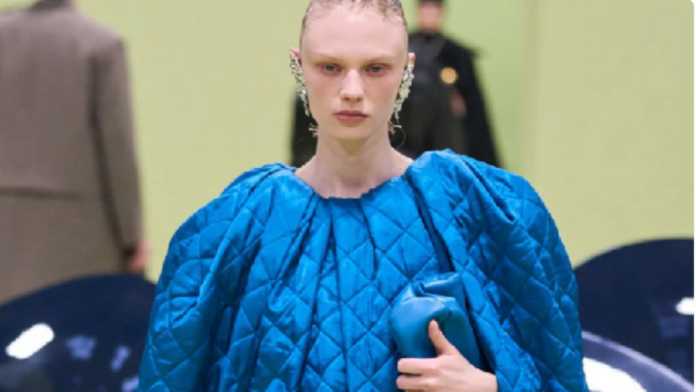Jil Sander and Maison Margiela, two stalwarts of the luxury fashion world, are embracing blockchain technology to enhance the authenticity and traceability of their products. This integration marks a significant shift in how luxury brands are leveraging cutting-edge technology to combat counterfeits and ensure the provenance of their high-end items.
The fashion industry has long been plagued by the proliferation of counterfeit goods, which not only dilutes brand value but also erodes consumer trust. By adopting blockchain, Jil Sander and Maison Margiela aim to create a transparent and immutable digital ledger that tracks each product from its creation to its final sale. This technology ensures that every transaction is recorded in a decentralized database, making it nearly impossible to alter or forge product histories.
Blockchain technology, known for underpinning cryptocurrencies like Bitcoin, offers a robust solution for verifying the authenticity of luxury goods. Each item produced by Jil Sander and Maison Margiela will be assigned a unique digital identity, stored on the blockchain. This identity can be accessed by consumers through a QR code or NFC chip embedded in the product, providing detailed information about its origin, materials, and journey through the supply chain.
For consumers, this means a new level of transparency and trust. By simply scanning the code, they can verify the authenticity of their purchase and gain insights into the craftsmanship and ethical practices behind it. This initiative not only enhances the customer experience but also strengthens brand loyalty by ensuring that the exclusivity and quality associated with luxury brands remain intact.
The move by Jil Sander and Maison Margiela is part of a broader trend within the luxury industry. As digital transformation continues to reshape various sectors, luxury brands are increasingly exploring how technology can help them address long-standing challenges. Blockchain, with its ability to provide secure and transparent record-keeping, is emerging as a key tool in this transformation.
One of the primary advantages of blockchain technology is its ability to create an immutable record of transactions. This means that once information is recorded on the blockchain, it cannot be changed or tampered with. For luxury brands, this provides a powerful deterrent against counterfeiting. Each step in the product’s journey—from the sourcing of raw materials to the final sale—is documented and verified, creating a trustworthy record that can be easily accessed and audited.
Jil Sander and Maison Margiela are not alone in their pursuit of digital authenticity. Other luxury brands have also begun to explore blockchain’s potential. For instance, LVMH, the parent company of brands like Louis Vuitton and Dior, has launched its own blockchain platform, Aura, to track the provenance of its products. Similarly, Prada and Cartier have joined forces to create the Aura Blockchain Consortium, aimed at setting industry standards for transparency and traceability.
The integration of blockchain technology in the fashion industry is not just about combating counterfeits; it also addresses growing consumer demand for ethical and sustainable practices. Modern consumers are increasingly concerned about the environmental and social impact of their purchases. By providing a transparent record of a product’s journey, brands can demonstrate their commitment to sustainability and ethical sourcing.
For example, a consumer purchasing a luxury handbag from Jil Sander can now access information about the materials used, the conditions under which it was manufactured, and the environmental impact of its production. This level of transparency empowers consumers to make informed decisions and aligns with the values of a new generation of luxury buyers who prioritize sustainability and ethics.
Moreover, blockchain technology enhances the overall customer experience by adding a layer of interactivity and engagement. Brands can use the digital identity of their products to share exclusive content, such as behind-the-scenes videos, designer interviews, and care instructions. This not only enriches the storytelling aspect of the brand but also creates a deeper connection with consumers.
The adoption of blockchain by Jil Sander and Maison Margiela is a forward-thinking move that positions them at the forefront of technological innovation in the fashion industry. It reflects a broader recognition that technology can be a powerful ally in addressing some of the industry’s most pressing challenges. As more brands follow suit, blockchain technology is poised to become a standard tool in the luxury sector, transforming how authenticity and traceability are managed.
While the implementation of blockchain technology presents exciting opportunities, it also comes with challenges. Ensuring widespread adoption and integration across the supply chain requires collaboration and investment. Brands must work closely with suppliers, manufacturers, and retailers to create a seamless and secure digital ecosystem. Additionally, educating consumers about the benefits of blockchain and how to access and use the information is crucial for the success of this initiative.
Despite these challenges, the potential benefits of blockchain technology for the luxury fashion industry are immense. By creating a secure and transparent record of product histories, brands can protect their reputation, enhance consumer trust, and address the growing demand for ethical and sustainable practices. The efforts of Jil Sander and Maison Margiela serve as a testament to the transformative power of technology and its ability to drive innovation in even the most traditional industries.
As the fashion industry continues to evolve, the integration of blockchain technology represents a significant step towards a more transparent, ethical, and consumer-centric future. The pioneering efforts of Jil Sander and Maison Margiela will likely inspire other luxury brands to explore how blockchain can enhance their operations and strengthen their connection with consumers. In an age where authenticity and trust are paramount, blockchain technology offers a compelling solution that promises to reshape the landscape of luxury fashion.


